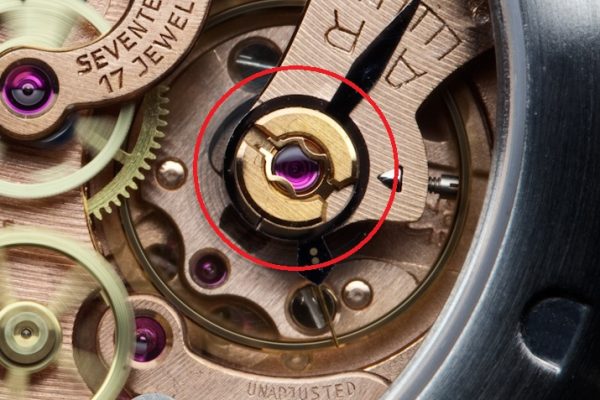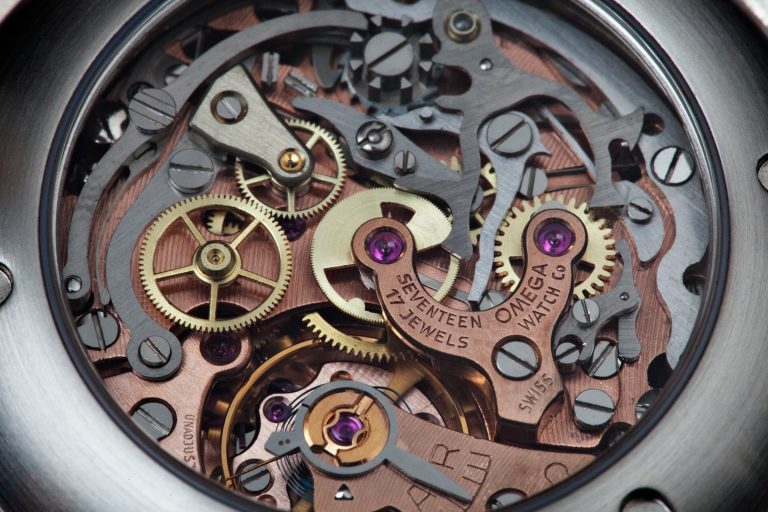Many famous watch brands will point out that their watch movements are made with a number of “jewels,” anywhere from 17 to 27 (or even more). That sounds impressive, but have you ever wondered why they are there in the first place? Any why you can’t usually see them like you can gemstones that decorate the exterior of the watch?
The short answer is that they are a functional part of the watch movement, rather than a decoration. To delve into a bit more detail, read the following article. To find the best place for watch repair in San Diego, look no further than Leo Hamel Fine Jewelers.
Where Are All These Jewels?
As mentioned before, these jewels aren’t a decoration, so they can’t be seen on the dial of the watch. They are embedded into the mechanism itself. Some high-end watches have a transparent dial or case back so that the mechanism can be observed. In these kinds of watches, the movement’s jewels can be seen. In most cases, the bearings are made of gemstones, but it is quite common that other parts of the watch mechanism are crafted from gems as well.
Why Are They There?
In any mechanism, metal parts interact with each other to create friction. Depending on the material, over time this friction causes wear and eventually, breakage. In order to prevent this from happening, or at least to prolong the durability of the parts, watchmakers needed to design the meeting points of these parts out of something harder than the metal they are made of. Since certain gemstones are very hard, they were selected for the task. Their relative hardness also means that they are more resistant to heat and other external factors, adding to the accuracy of the watches themselves.


Which Gems Are Used?
The Mohs scale of mineral hardness indicates the relative hardness of various minerals/gemstones. Only gemstones with the hardness of 9+ on the scale are acceptable for use in watch mechanisms since they are harder and more durable than the metal parts. The gemstones that fit that bill are diamond and corundum (ruby and sapphire). Initially, in the early 18th century, natural gemstones were used. Nowadays, though, synthetic gemstones are commonly used, chiefly synthetic sapphire or rubies, and they are mass-produced specifically for the watch industry.
Why Does the Number of Jewels Vary?
Different types of watches require a different number of jewels. Typically, the simplest jeweled watch requires 17 jewels. As more complicated functions and parts are added, more jewels are needed, up to 27. In the early days, it was relatively complicated to shape the gemstones and fit them into the small and intricate watch mechanisms, so as few jewels as necessary were used to prolong the life of the movement.
And as the watches got more complicated, they required more gemstones to cushion the additional moving parts. This gave rise to the commonly held belief that more jewels meant a better watch. In response, some watch companies started adding jewels where no jewels were needed, just to increase the jewel count, and watch movements set with as many as 100 jewels were created.
Apart from high-end watches, many other sensitive measuring devices require jeweled bearings, as their resistance to heat, corrosion, and low friction is invaluable for the accuracy of measurement. Such devices include galvanometers, compasses, and gyroscopes.
San Diego Watch Repair
In our modern society, a jeweled watch can be a status symbol rather than a necessary tool. The right watch can speak louder than words about the style and status of the wearer. And even though jeweled watches are much more durable, they aren’t impervious to breakdowns. Fine automatic watches should be serviced every 3 to 5 years to avoid unnecessary wear and loss of accuracy.
If you are looking for watch repair in the San Diego area, look no further than Leo Hamel Fine Jewelers. The Master Watchmaker of Leo Hamel’s repair shop has over 35 years of experience repairing fine watches. You can be sure that your bejeweled timepiece is in safe hands.
